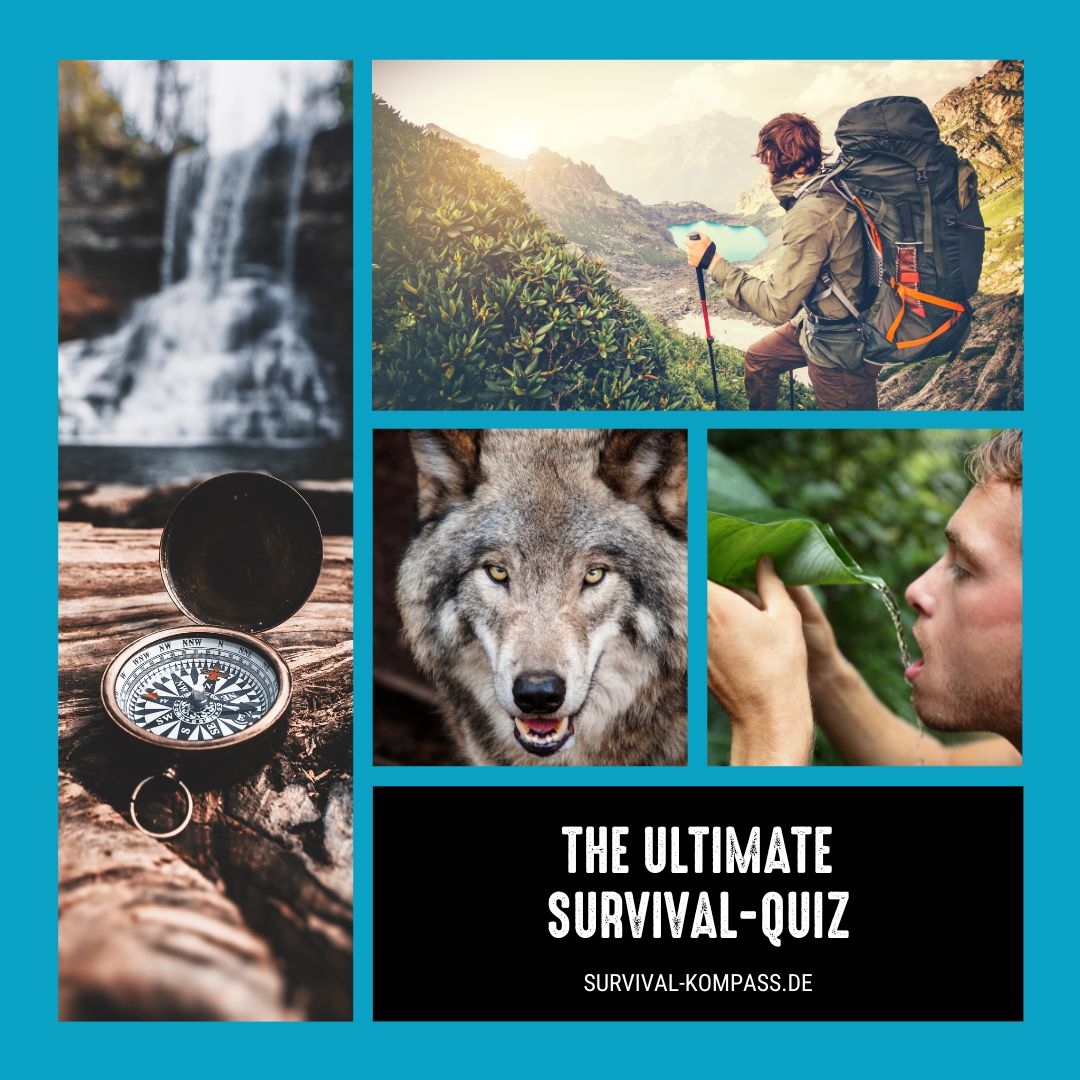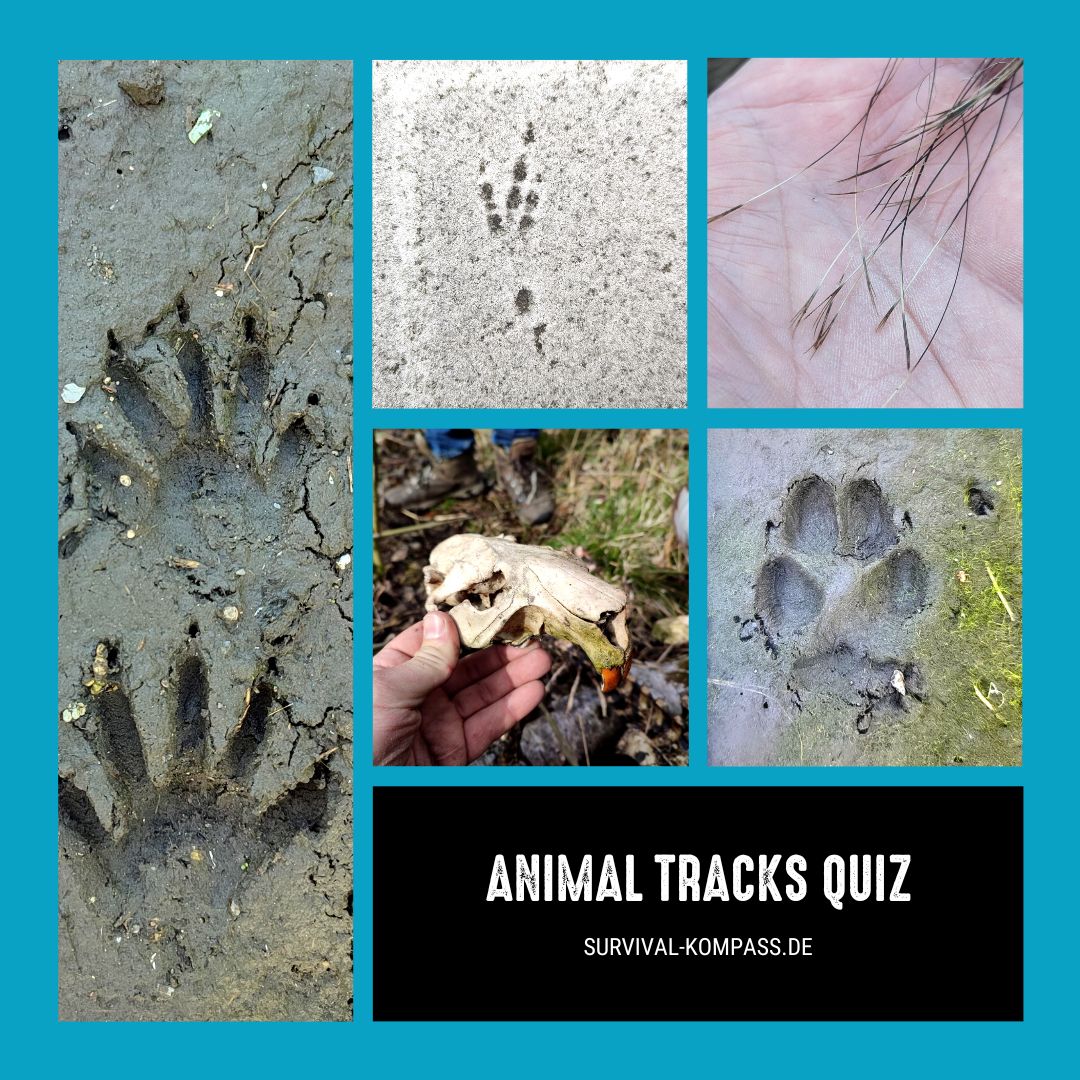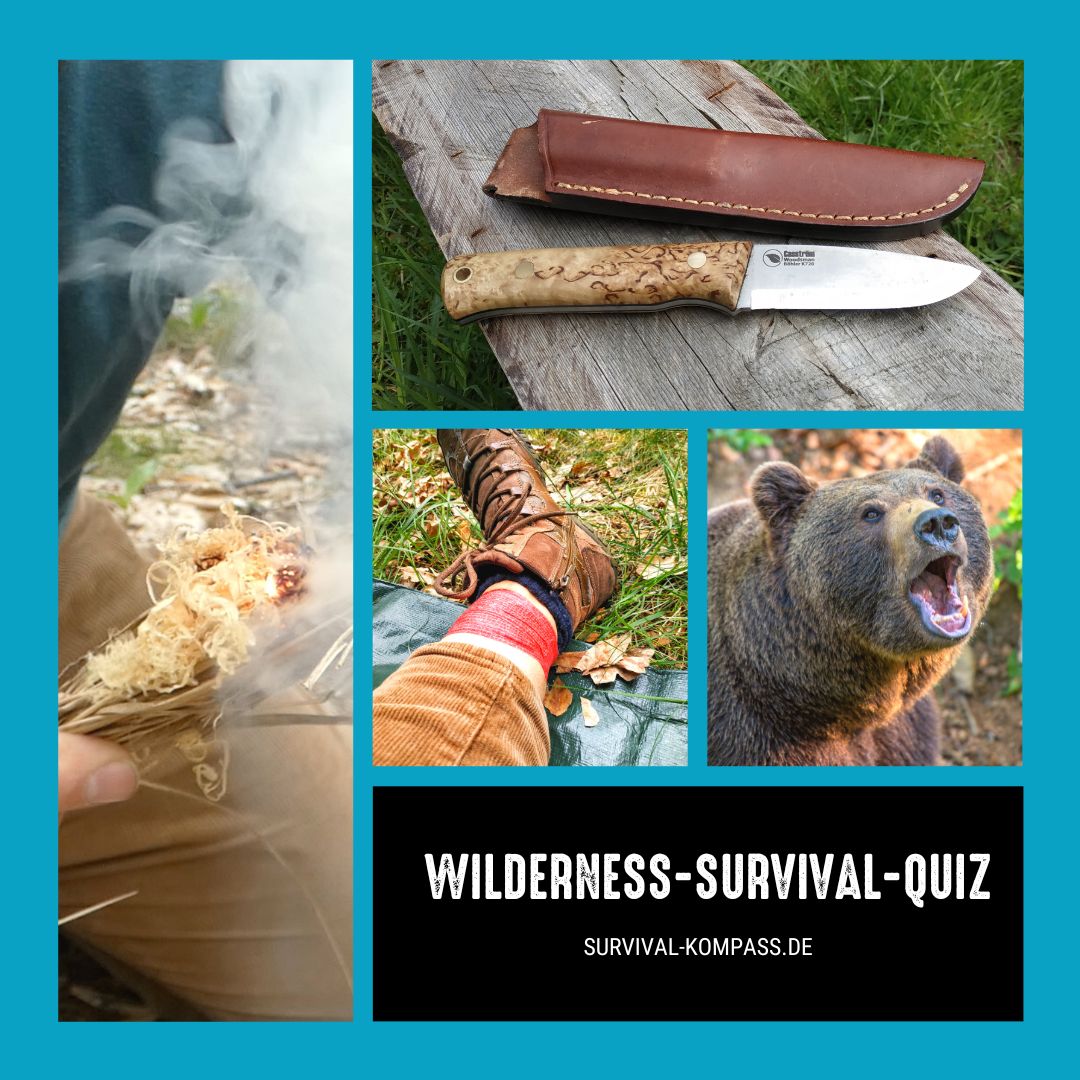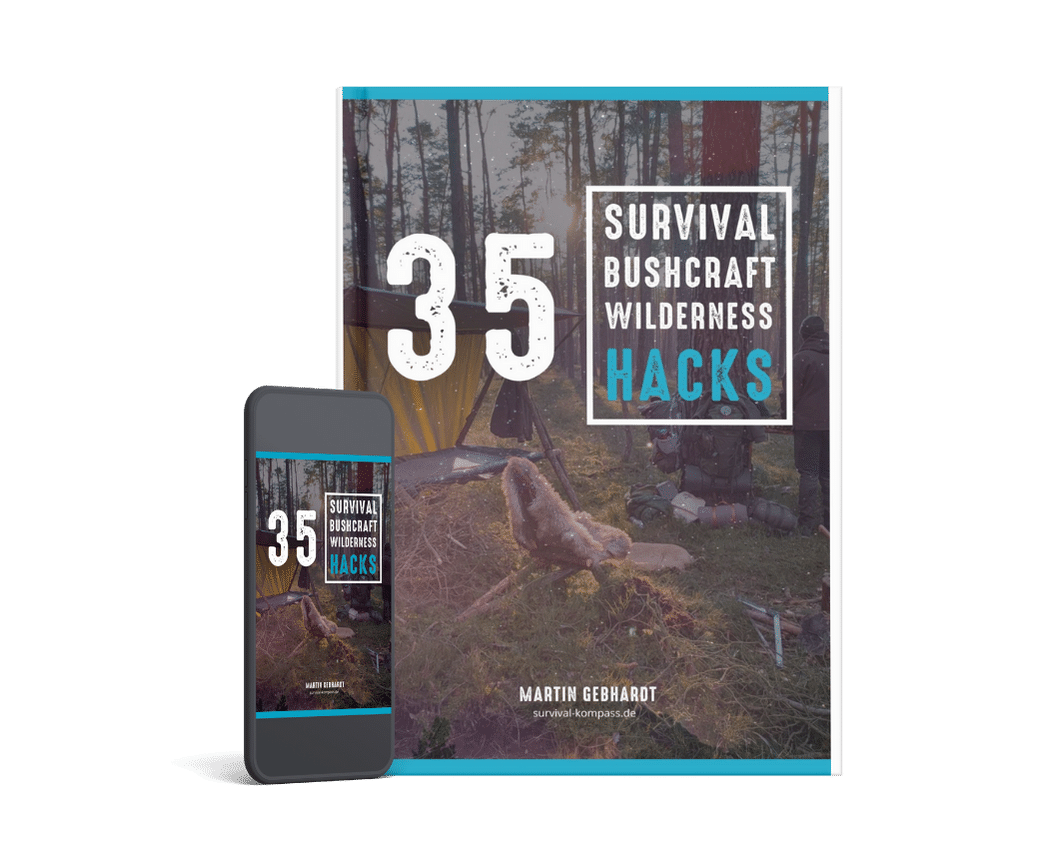

Water Survival Quiz: Finding & Treating Water in the Wild
Water is the basis of life, especially in the wilderness. In this quiz, you'll learn how to find, treat, and make water drinkable in harsh environments. Test your knowledge of life-saving water extraction methods now!
16 visitors have already taken the quiz and achieved an average score of 73 %. Can you do better?
Question 1 of 22
Which method is considered very safe for killing bacteria and parasites?
Boiling water is the safest method to kill pathogens. The water should boil vigorously for at least 2-3 minutes.
You can find out how to boil water without a pot in our guide "Boiling water without a pot".
Question 2 of 22
Which principle describes how long a person can generally survive without drinking water?
The "Rule of Three" states: A person can survive about 3 minutes without air, 3 hours without shelter in the cold, 3 days without water, and 3 weeks without food. However, this is only a rough guideline, and external influences as well as physical fitness affect this rule.
You can learn why certain water sources like saltwater or urine are not alternatives in our guides.
Question 3 of 22
Which water source is often least contaminated and therefore preferred, provided it is not contaminated by dead animals?
Flowing waters are usually cleaner than still ones, as impurities accumulate less due to constant movement. Nevertheless, this water should also be treated before drinking.
You can learn how to properly collect and treat water in our detailed Water Guide, and here you can learn whether you can drink rainwater.
Question 4 of 22
What is often the first measure in a survival situation before taking further steps?
Water is the absolute priority in a survival situation. Without water, a person only survives for about three days, while one can go without food for up to three weeks.
You can learn how to safely find and treat water in our Water Guide. It is also particularly important to know which water sources to avoid - more on this in our articles on saltwater and urine as a water source.
Question 5 of 22
What happens in the body when you are dehydrated?
In dehydration, the blood actually thickens, which means the organs are less supplied. This can lead to life-threatening situations.
You can learn more about the importance of water for the body in our Water Guide.
Question 6 of 22
Which method is suitable for obtaining clean drinking water even from seawater or urine?
Through distillation, you can actually obtain drinkable water from saltwater and even from urine. The water is evaporated and the vapor is collected again.
You can find out how to remove salt from water in our article on water desalination.
Question 7 of 22
Which method allows you to heat water without a pot?
The hot stone method is one of the oldest techniques for heating water without a pot. The stones are heated in a fire and then carefully placed into the water.
More on this in our guide Boiling water without a pot.
Question 8 of 22
Which traditional container is suitable in a survival situation if you don't have a cooking pot?
A cleaned and sewn animal skin is indeed a traditional container that is well suited for heating water.
Further creative methods can be found in our guide on boiling water without a pot.
Question 9 of 22
According to the WHO, at what temperature are 99.999% of bacteria killed?
At 70°C, according to WHO data, 99.999% of bacteria are killed. Nevertheless, it is safer to bring the water to a boil.
You can find more about safe water treatment in our Water Guide.
Question 10 of 22
Why is cloudy, boiled water still drinkable?
Cloudy water is not pretty to look at after boiling, but it is often harmless. The body can easily excrete the mineral suspended solids.
You can learn more about water treatment in our Water Guide.
Question 11 of 22
Why should water not be filtered after boiling?
After boiling, the water is sterile. Further filtering carries the risk of re-contamination by dirty filters.
You can learn how to properly treat water in our Water Guide.
Question 12 of 22
Which method is NOT suitable for purifying urine?
UV light is not suitable for purifying urine as it cannot remove dissolved substances. Only distillation methods can produce potable water from urine.
You can learn why urine is not a direct water source in our article about drinking urine.
Question 13 of 22
What happens to the composition of urine with increasing dehydration?
In dehydration, urine becomes more concentrated as the body retains more water and waste products are excreted in less fluid.
You can learn why urine is not an option in our article about drinking urine.
Question 14 of 22
Which plants often contain potable water?
In tropical and temperate regions, many plants store water in their stems or tendrils. Bamboo, for example, can hold large amounts of water in its hollow spaces, which is often directly drinkable. Certain lianas, especially in rainforests, also contain clean water that you can obtain by slitting the tendrils.
Question 15 of 22
Why is unmelted snow not an ideal water source?
Snow consists largely of air, which is why its water content is relatively low. If you eat it directly, your body has to expend additional energy to warm it up and melt it. This can lower your body temperature, which is particularly dangerous in cold environments. It is better to melt the snow first and, if possible, warm it. You can find more information in this guide on eating snow.
Question 16 of 22
Which improvised method can extract water from moist soil or plants?
The solar still uses solar energy to extract water from moist soil or plants. To do this, you dig a hole in the ground, place a sheet over it, and weigh down the center with a stone. The evaporating water condenses on the sheet and drips into a collection vessel. This method is particularly helpful in dry areas. Learn more in this article about water extraction.
Question 17 of 22
Which natural indicators point to a potential water source?
Animals, especially birds and insects, often move near water sources. Dense vegetation, such as reeds or willows, indicates that the ground is moist. Traces of wild animals also often lead to water sources.
Question 18 of 22
How can you best collect rainwater?
If you don't have containers, you can use a plastic sheet, a tarp, or large leaves to collect rainwater. A hollow in the ground with a waterproof layer can also help store rainwater.
Question 19 of 22
Why is activated carbon a good water filter?
Activated carbon binds impurities, chemicals, and even some pathogens from the water. It also makes the water more palatable by filtering out chlorine and other taste-altering substances.
Question 20 of 22
How can you disinfect water in an emergency without fire?
UV radiation from the sun can kill bacteria and viruses in water. To do this, the water must be exposed to direct sunlight for several hours in a clear plastic bottle. This method is not perfect, but better than nothing.
Question 21 of 22
Why is water sometimes still dangerous despite filtration?
A filter usually only removes suspended solids and some bacteria, but not viruses or chemical residues. To be safe, you should always additionally boil or chemically disinfect water.
Question 22 of 22
Which method is NOT suitable for water purification in the wilderness?
While sand can filter out coarse particles from water, it cannot remove bacteria or chemicals. A combination of filtration and disinfection is therefore the best method.
Water Survival Quiz: Finding & Treating Water in the Wild
Your score:

How did you like the quiz?
Your rating
Rate the quiz with school grades





